November 2021
Group: Tatiana Bohsali, Maria Shuttleworth
Group: Tatiana Bohsali, Maria Shuttleworth
IDEATION & PROTOTYPING
As we finished the bodystorming sessions we knew we wanted to start focusing on the importance of conversation in the language learning process as we wanted to create an experience that facilitates and helps learners and teachers in conversations. To do so we wanted to bridge the digital and physical dimensions. To do we started making things which led us to create our first physical prototype. We thought of creating a safe space for people which would help them through their learning/practising process. There were two aspects that we wanted the experience to have. One is visuals, finding a way to present the information spoken in the conversation appear in front of people like pictures, words or translations. The other element would be the ability to save the things spoken/things that appear in the learner's personal library.
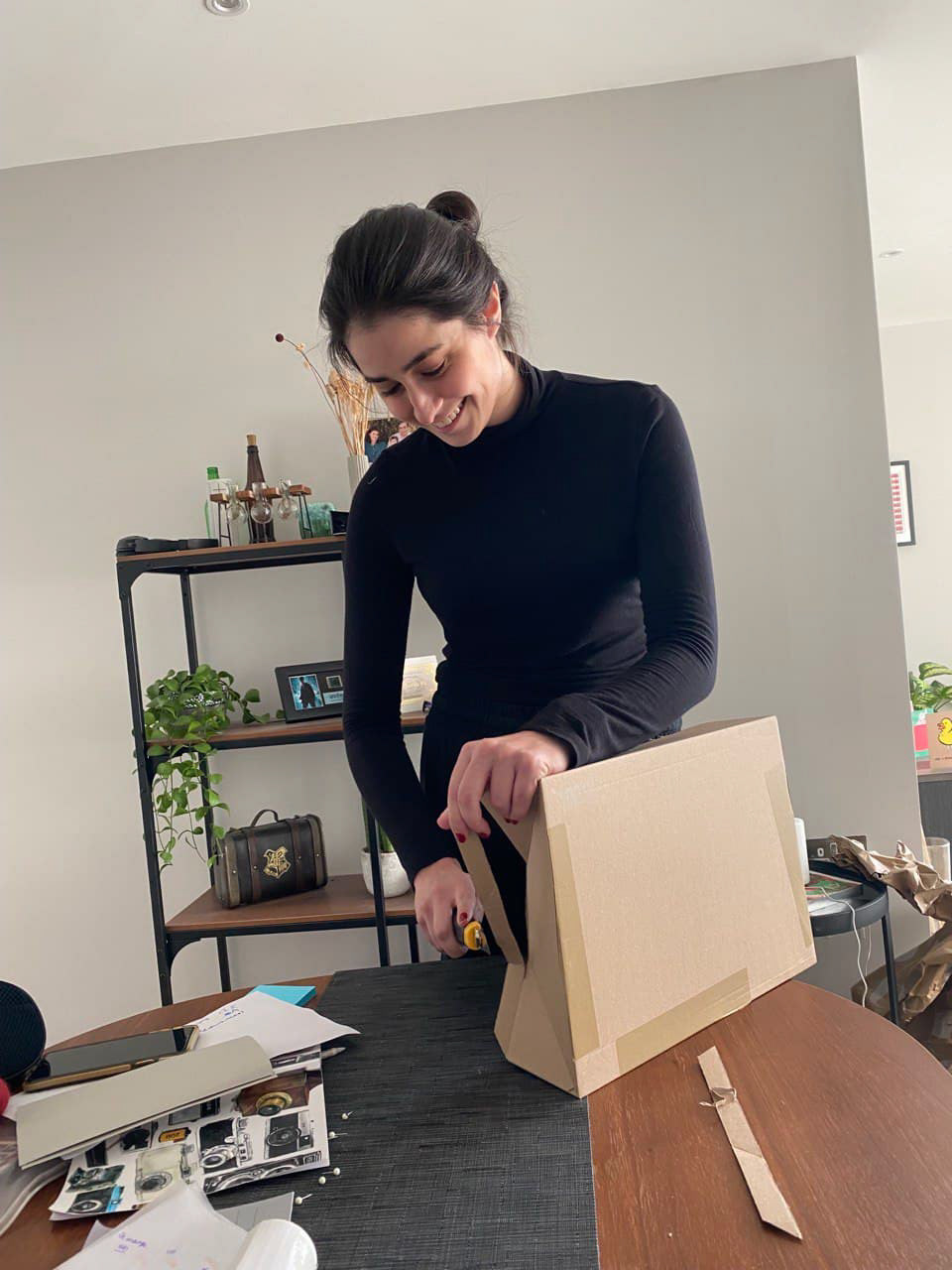
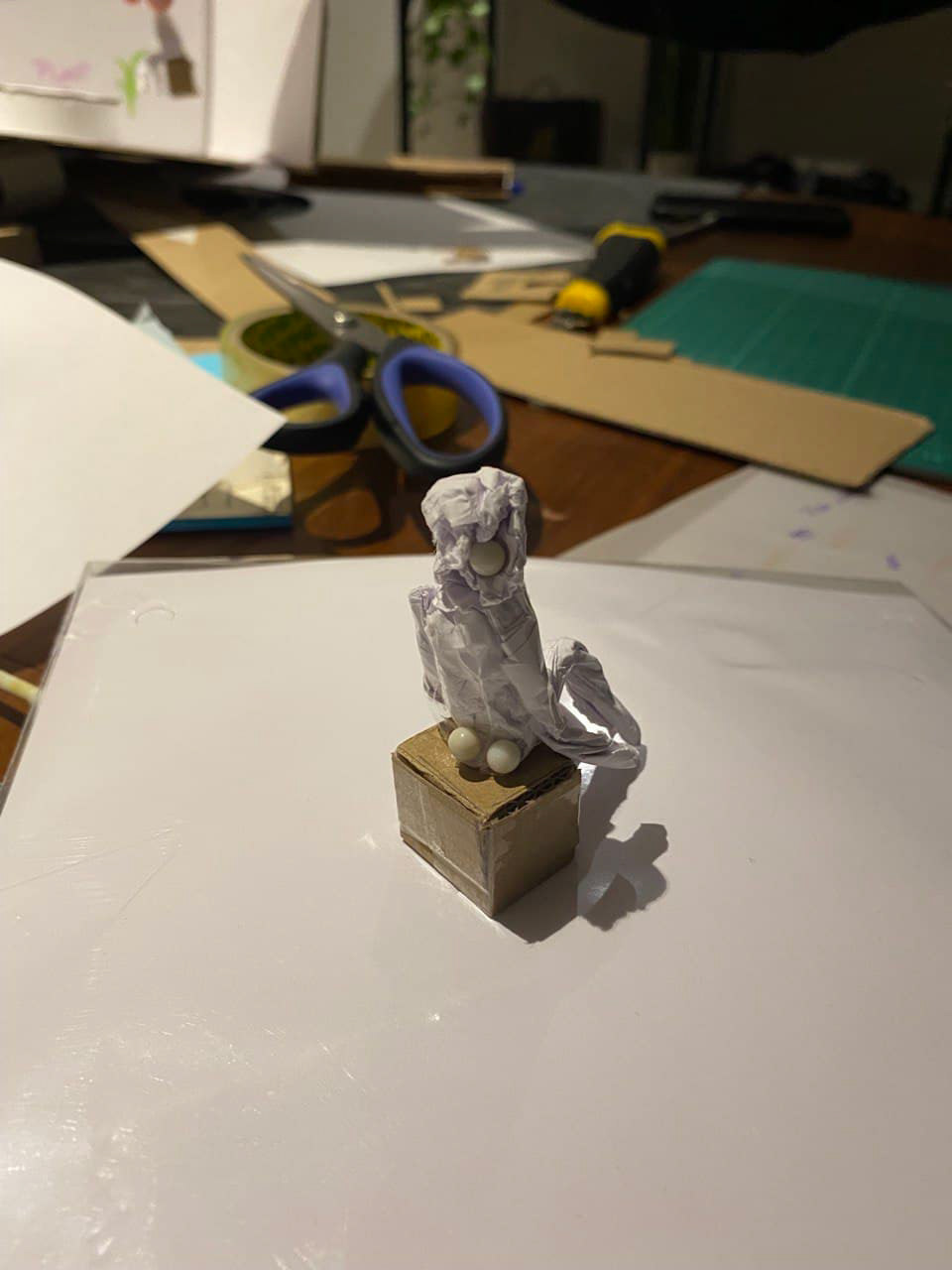
The process of creating our first prototype. Photos by me.
What we came up with in the end was a white room with a table and chairs, where people sit down and have a conversation. While they talk, there would be things appearing on the wall behind each person so their companion could see a visual representation of what is being said. This would be useful for them to understand and memorise different parts by making associations on the spot. This would also include the props like questions, objects or activities that learners could do in order to help them navigate the conversation. All of the data including images and the conversation transcript would then be saved to participants' personal libraries so they can view it later on.
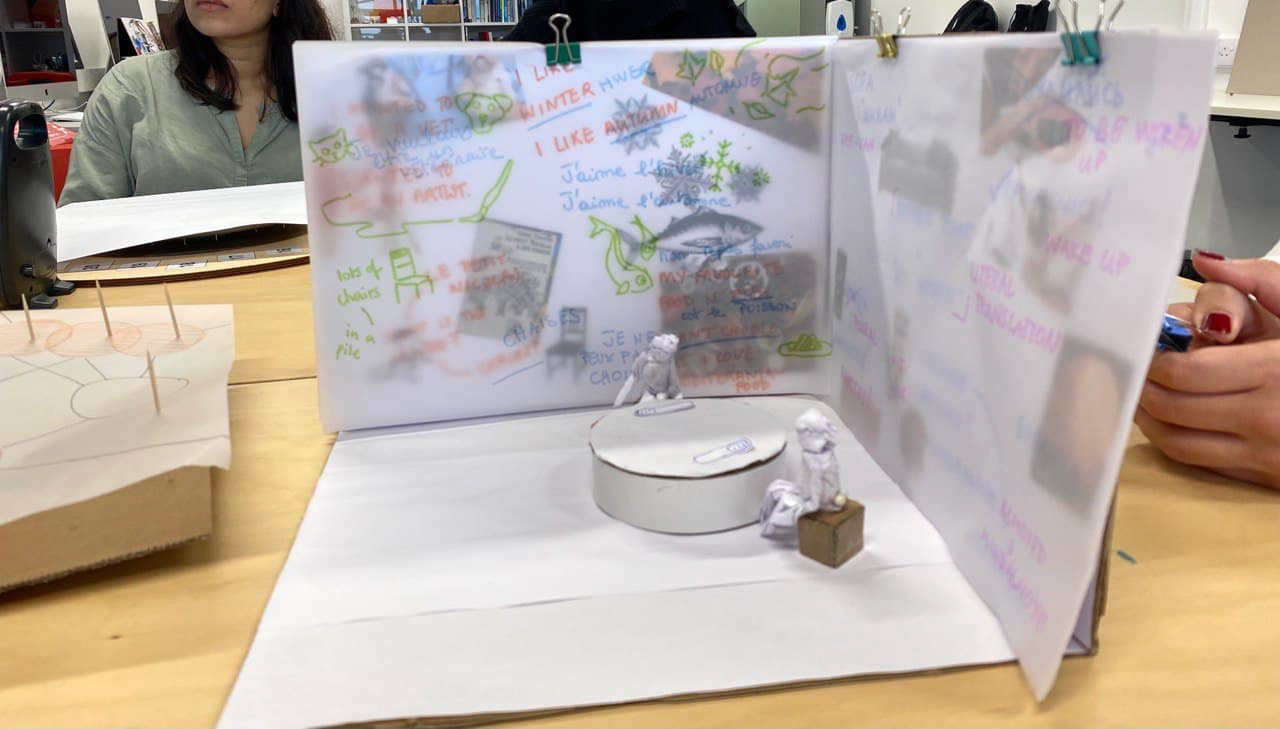
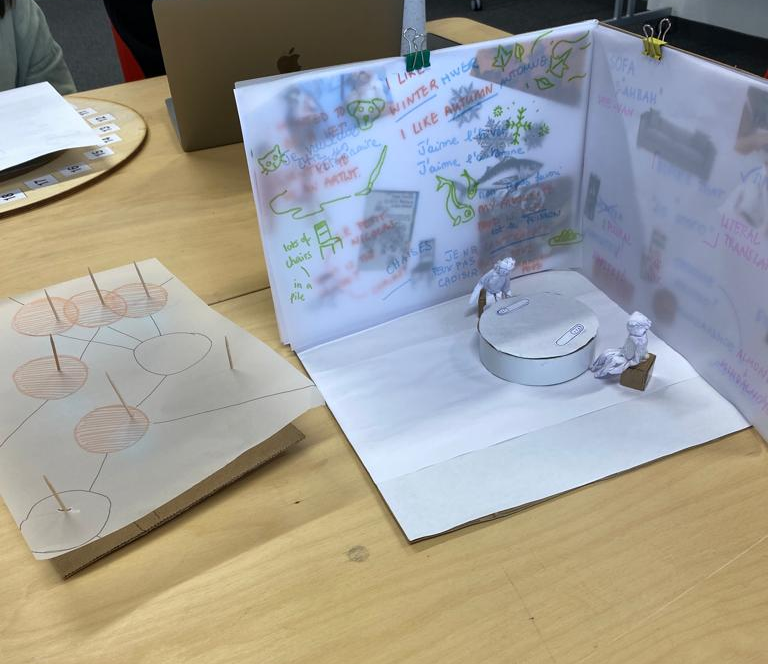
Photos of our prototype. Taken by me.
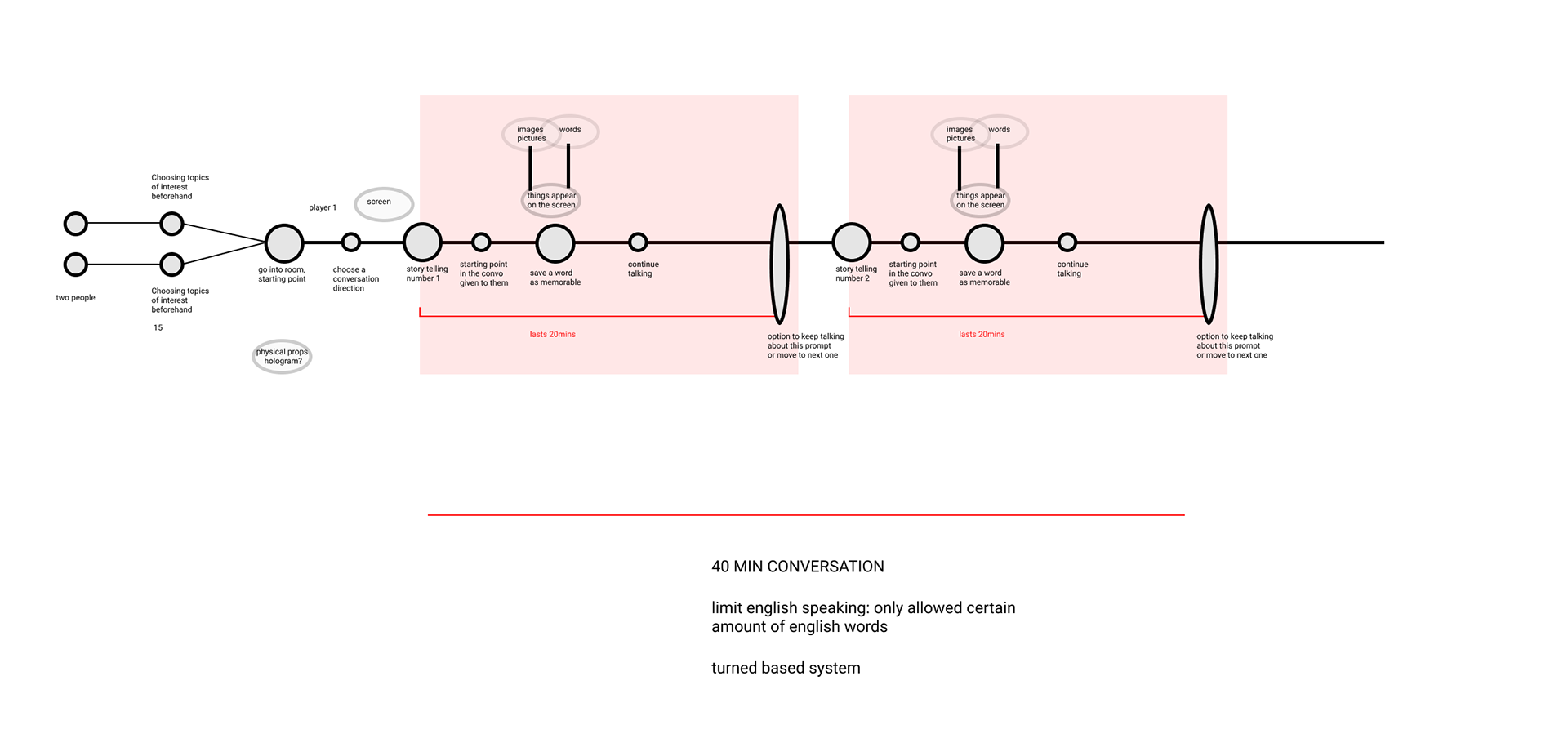
The user journey of this experience. Developed collaboratively.
Our tutors really liked that we started to explore through design and that we made a physical prototype. However, they pointed out some things that we should consider. Among other technical comments about how we are planning to create something so complex there were concerns about the experience's usability. How and where this would be used and how can we make it more fluid for people to be able to do this anywhere. We agreed with it as making it just as one single room somewhere would be counterproductive and wouldn't help make their language learning process more efficient. As I have been very interested in exploring and working on finding a way to maintain people's motivation in the language learning process, I realised that this idea is definitely not going to be it. Furthermore, they highlighted that we still had a lot of things that we wanted to tackle - digital and physical, visual and personalised. This made us realise that something we have been wanting to do all along - a personal library experience - is on its own a difficult task...
REALISATION
Although we weren't happy about having to lose the physical aspect of our outcome, we knew it was the right thing to do. Once we directed all of our attention to creating a personal library, things started going a lot quicker for us. It's almost as if we got a second wind.
Although creating a personal library was a significant scale down from a very broad stage we were at, we thought that we needed to specify what that part of the language that library would contain. Without a lot of contemplation, we decided to focus on vocabulary as it was something we initially wanted to do - to help intermediate learners practice and expand their vocabulary. So we started brainstorming how that would look like, what features would the interface have, etc. We all thought of it as a web of many different words that people can add to, explore and retrieve when needed, which became the base of our first sketches and prototypes. We felt like this was a perfect way to structure things as it allowed us to make connections as well as explore and also associate certain words with a location on the grid. It is a complex, yet simple way of navigating through the information.
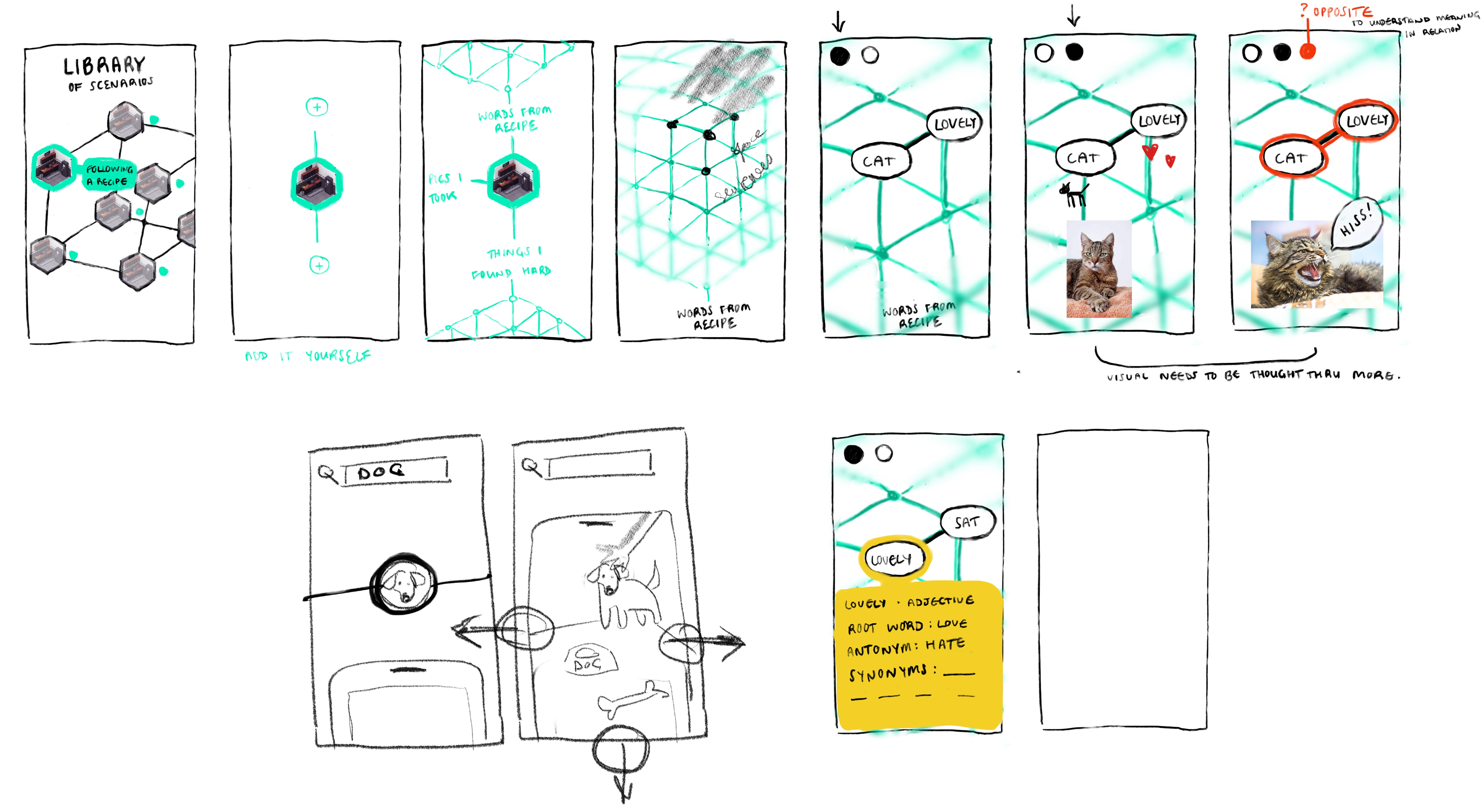
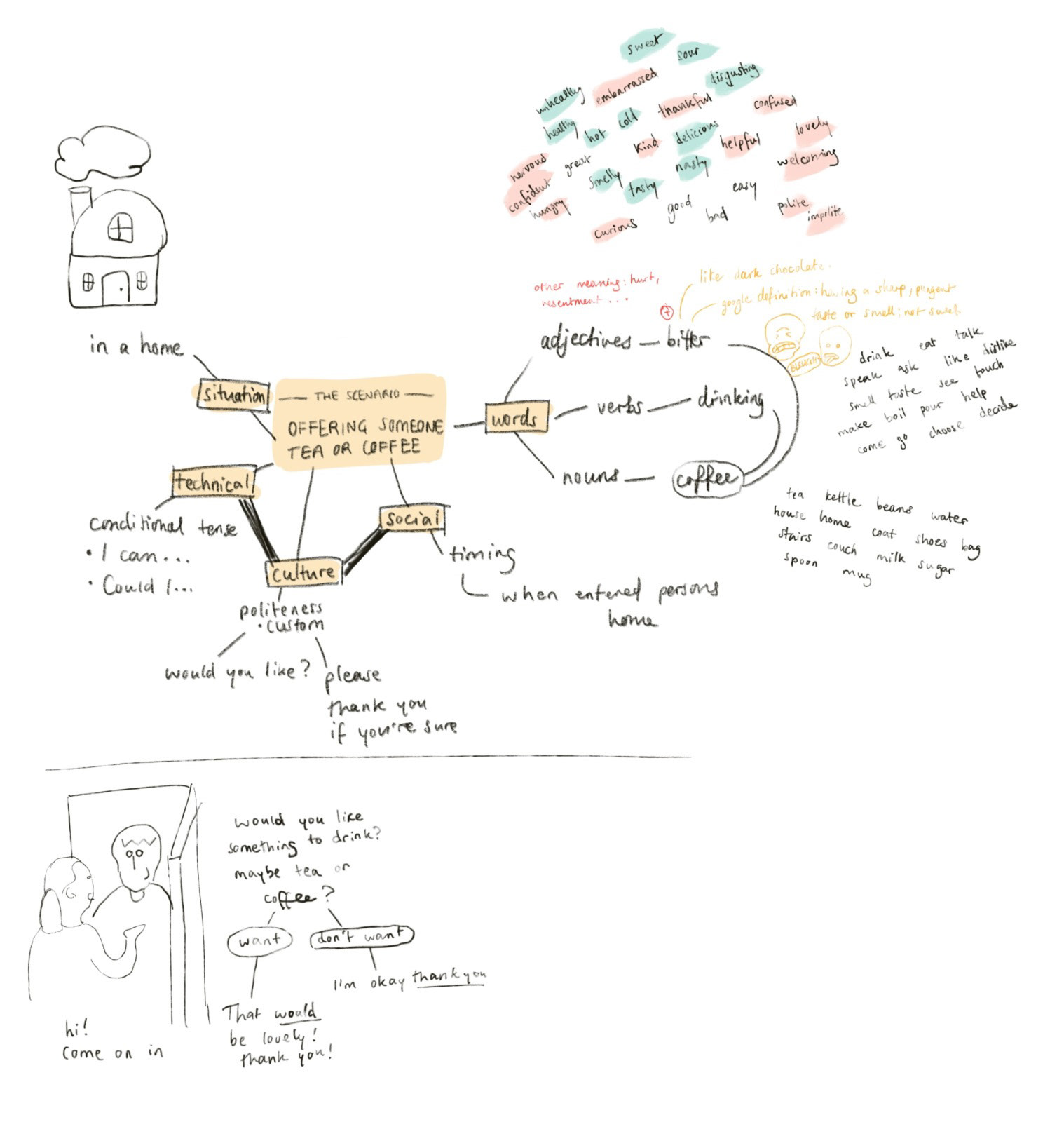
Initial sketches of the personal library interface for vocabulary learning. Sketches by Maria.


Initial Figma prototypes. Developed collaboratively.
Feedback
Finally, it was time to show our ideas to John. He was pleased that we finally managed to narrow down our focus to creating a personal library. However, he pointed out that having just words in our web would be overly simple. One would only need to learn vocabulary in an academic setting for a test or homework. Instead, he made a suggestion of having a library that clusters many different things according to the situation one would use them in. Learners can build their own situations of words, phrases, grammar, depending on where how and when they would use it. This would make our product much stronger and show our critical approach, which our project lacked. We agreed with his feedback and this idea inspired us and we got to creating our own interpretation of John's suggestions. This was very useful and this was the point where we felt super close to getting to answers we've been searching for and the outcome we wanted to achieve.
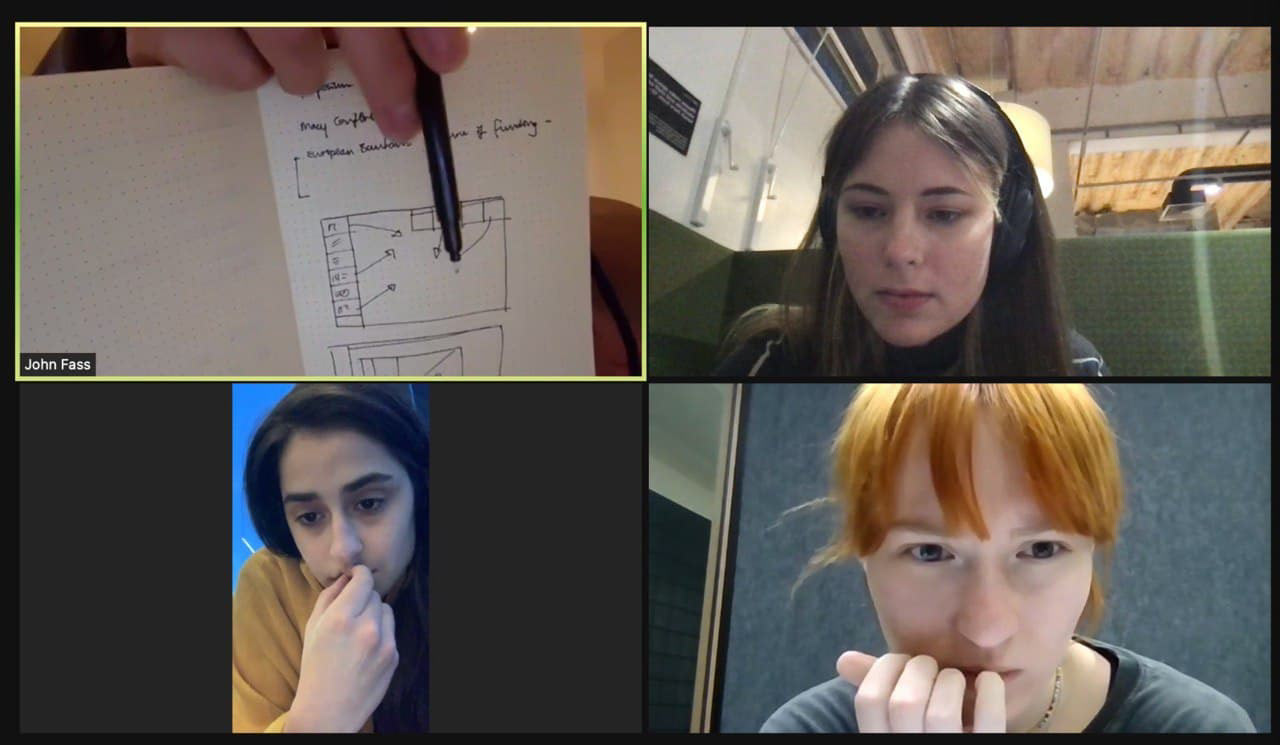
Tutorial with John where he explained his idea of having scenarios and situations as a foundation of the personal library. Screenshot by Maria.